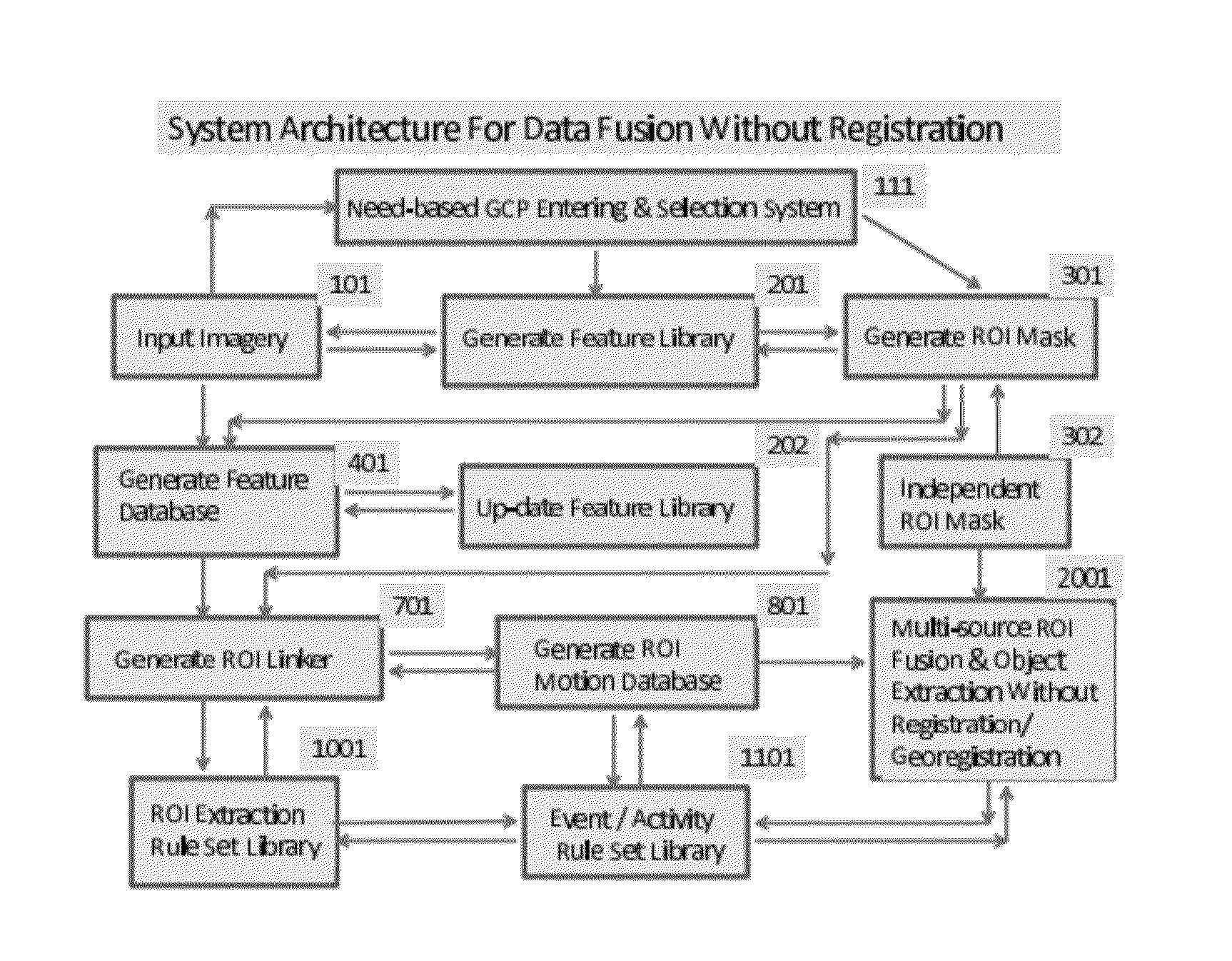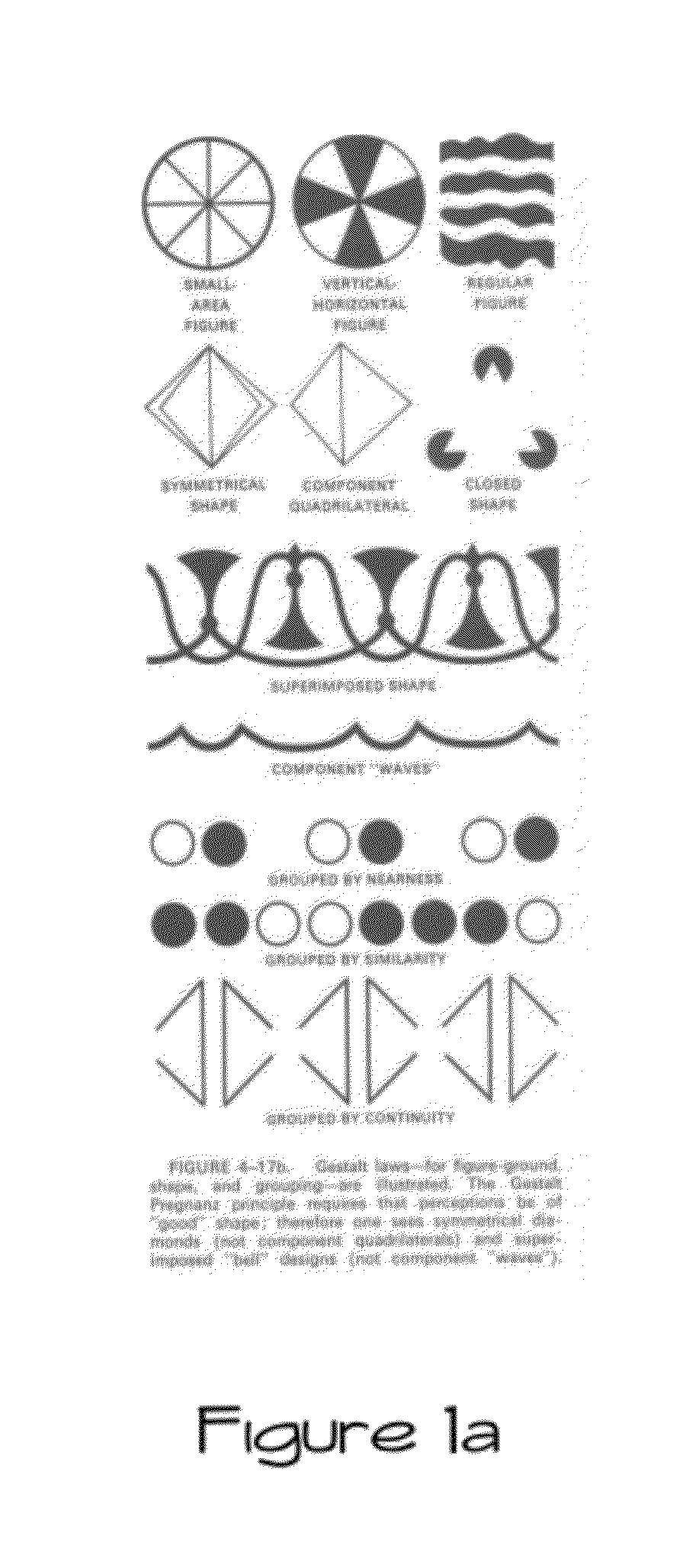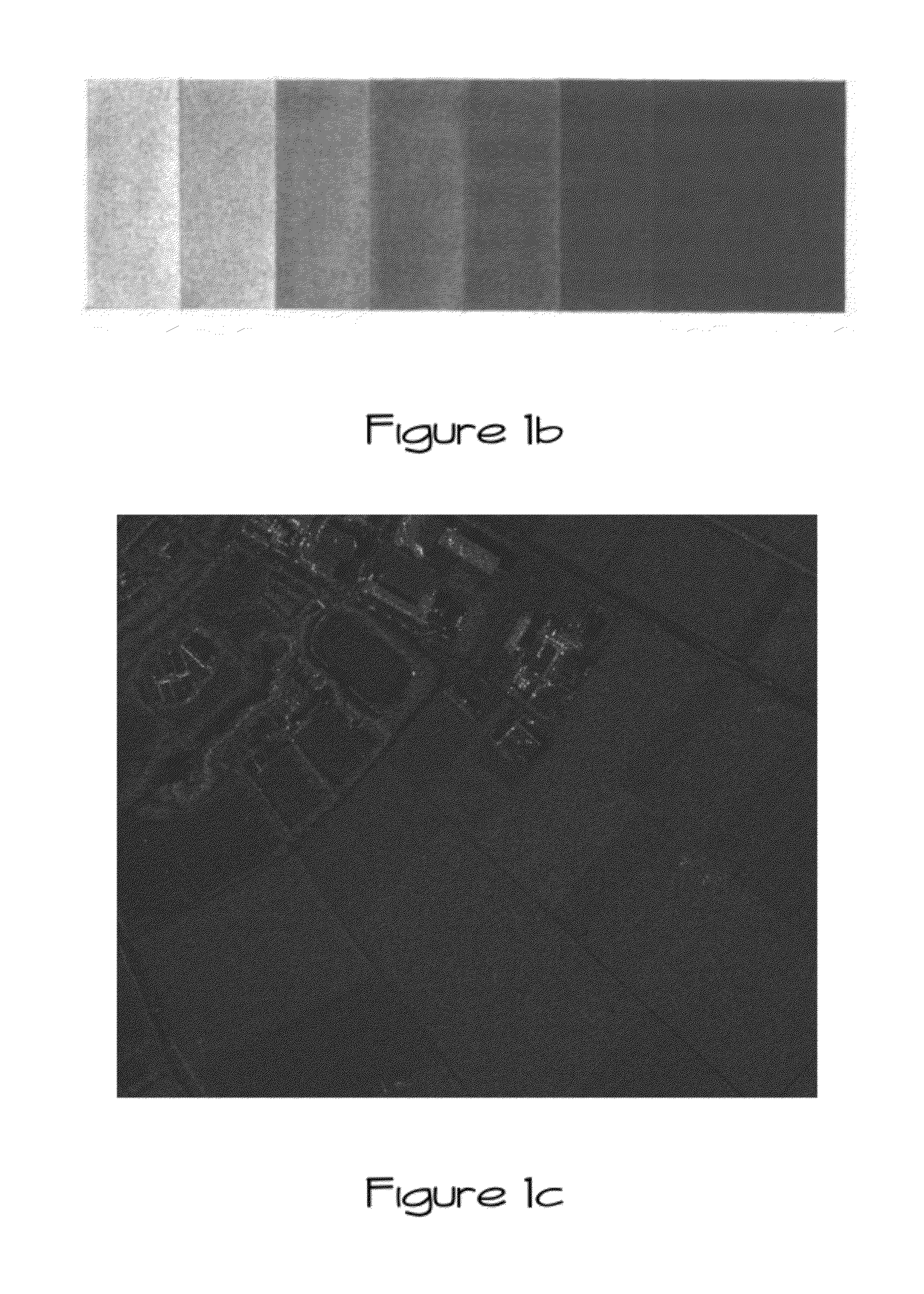Multi-figure system for object feature extraction tracking and recognition
- Summary
- Abstract
- Description
- Claims
- Application Information
AI Technical Summary
Benefits of technology
Problems solved by technology
Method used
Image
Examples
Embodiment Construction
[0102]In the above-noted SRE investigation sponsored by the Air Force Office Of Scientific Research (AFSOR), Hsu and Burright determined, by a perceptual test with 40 human subjects plus one machine decision, that when the test results are analyzed using a predetermined tone-texture model, about 50% of the subjects displayed a very good fit, 10% a good fit, 15% a moderate fit, and the remaining 25% showed either a poor or no fit. Such a high-degree (25%) of non-texture-tone based pattern recognition model employed by human subjects is consistent with the result of a 2006 study with 450 human subjects by Petite and Broek. For example, they noted that:
[0103]“Both color and shape did have a significant influence on the mutual agreement among the subjects, ranging from 78% (color—‘shapeless’), to 60% (gray—‘six-shape condition’). Using artificial clustering techniques we mimicked human's average texture classification in 80% (color—‘shapeless’) to 58% (gray—‘six-shape condition’) of the...
PUM
 Login to View More
Login to View More Abstract
Description
Claims
Application Information
 Login to View More
Login to View More - R&D
- Intellectual Property
- Life Sciences
- Materials
- Tech Scout
- Unparalleled Data Quality
- Higher Quality Content
- 60% Fewer Hallucinations
Browse by: Latest US Patents, China's latest patents, Technical Efficacy Thesaurus, Application Domain, Technology Topic, Popular Technical Reports.
© 2025 PatSnap. All rights reserved.Legal|Privacy policy|Modern Slavery Act Transparency Statement|Sitemap|About US| Contact US: help@patsnap.com



